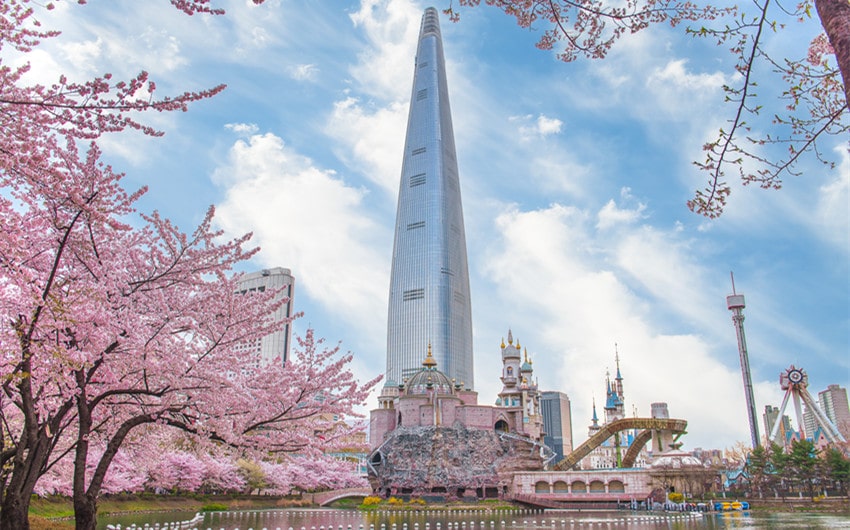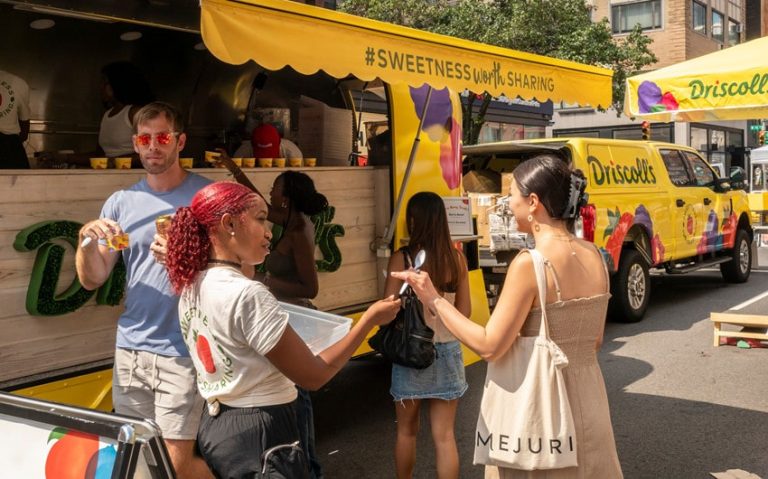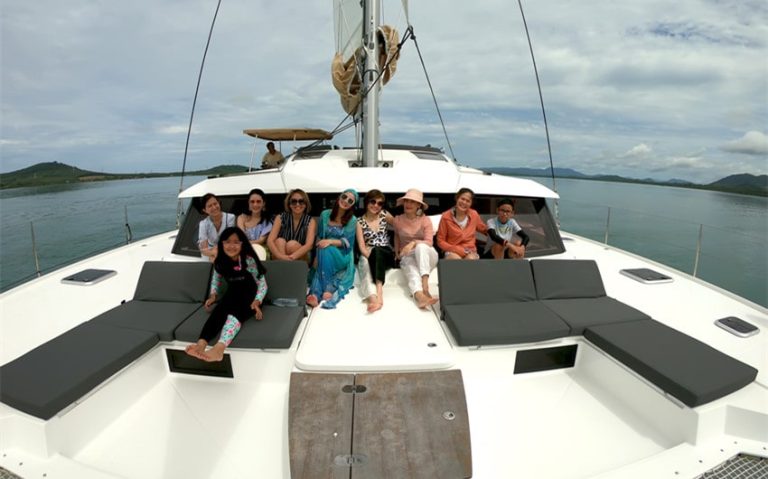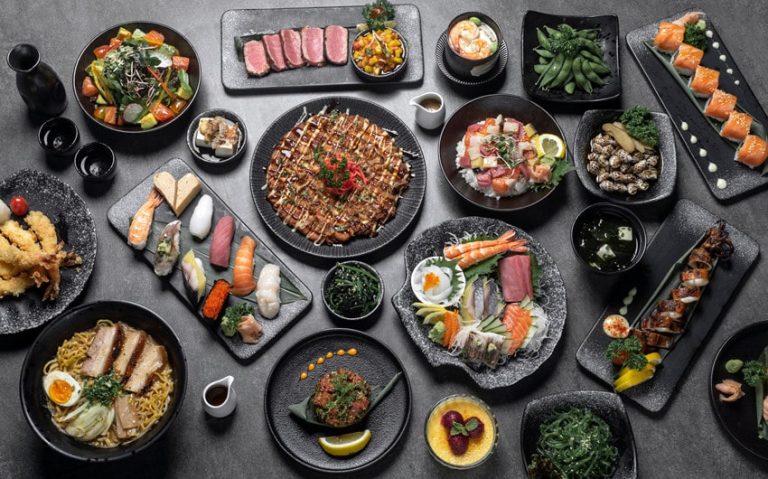Planning a trip to Korea can be an exciting adventure. From bustling cities to serene countryside, Korea offers a rich blend of modern attractions and traditional charm. Whether you’re wandering through ancient palaces or savoring street food, understanding local customs and knowing a few essential phrases can make your journey smoother and more enjoyable.
This guide is packed with travel tips, cultural insights, and language basics to help you fully experience all that Korea has to offer. Get ready to immerse yourself in the vibrant culture and stunning landscapes of this amazing destination.
1. Planning Your Trip
Best Times to Visit Korea
Korea has distinct seasons, each offering unique experiences. Spring (April to June) is one of the best times to visit, with cherry blossoms in full bloom and pleasant temperatures. Fall (September to November) is another ideal period, featuring vibrant autumn foliage and comfortable weather. Summer (July to August) can be hot and humid, but it’s perfect for beachgoers. Winter (December to February) is cold, especially in the north, but offers fantastic skiing and festive holiday events.
Essential Travel Documents and Visas
For most travelers, a valid passport is required to enter Korea. Depending on your nationality, you may need a visa. Citizens from many countries, including the US, UK, Canada, and Australia, can enter Korea visa-free for short stays (usually up to 90 days). It’s important to check the latest visa requirements and ensure your passport is valid for at least six months beyond your planned departure date. Additionally, always carry a copy of your passport and other important documents in case of emergencies.
2. Must-Visit Destinations
City Highlights
Seoul: The bustling capital of Korea, Seoul seamlessly blends ancient traditions with cutting-edge modernity. Explore historical sites like Gyeongbokgung Palace, where you can witness the changing of the guard ceremony, and Bukchon Hanok Village, a traditional Korean village with beautifully preserved hanok houses. For a taste of contemporary Seoul, visit the vibrant shopping districts of Myeongdong and Dongdaemun, or experience the lively nightlife in Hongdae and Itaewon. Don’t miss N Seoul Tower for panoramic views of the city, especially stunning at night.

Busan: As Korea’s second-largest city, Busan offers a delightful mix of urban and coastal experiences. Relax on the sandy shores of Haeundae and Gwangalli Beaches, or visit the bustling Jagalchi Fish Market to sample fresh seafood. The scenic Gamcheon Culture Village, with its colorful houses and artistic murals, is a must-see. For a more tranquil experience, explore the serene Haedong Yonggungsa Temple, located on a cliff overlooking the sea.
Countryside
Jeju Island: Often referred to as Korea’s “Hawaii,” Jeju Island is a haven for nature lovers. Hike up Hallasan Mountain, the island’s highest peak, for breathtaking views, or explore the Jeju Olle Trail, a series of walking paths that take you through picturesque coastal and rural landscapes. The UNESCO-listed Seongsan Ilchulbong Peak, also known as Sunrise Peak, offers spectacular sunrise views. Jeju’s unique volcanic features, such as the Manjanggul Lava Tube, add to its natural allure.
Andong: Known for its rich cultural heritage, Andong is home to the Hahoe Folk Village, a UNESCO World Heritage site that preserves traditional Korean architecture and way of life. The annual Andong Mask Dance Festival showcases traditional mask dances and performances, offering a deep dive into Korea’s cultural history. The region is also famous for its delicious Andong jjimdak, a savory braised chicken dish.
Cultural Sites
Gyeongju: Often called “the museum without walls,” Gyeongju is a treasure trove of historical and cultural sites. Visit the majestic Bulguksa Temple and the nearby Seokguram Grotto, both UNESCO World Heritage sites. Explore the ancient tombs in Tumuli Park, where you can see the impressive burial mounds of Silla dynasty kings. Anapji Pond, a beautiful artificial lake, is particularly enchanting at night when the surrounding structures are illuminated.
Suwon: Suwon is best known for the UNESCO-listed Hwaseong Fortress, a well-preserved 18th-century fortification that offers insights into Korea’s architectural and military history. Walk along the fortress walls for scenic views of the city and visit the Hwaseong Haenggung Palace, a former royal residence. Suwon is also famous for its delicious galbi (grilled beef ribs), making it a great destination for food enthusiasts.
3. Korean Culture and Etiquette
Dining Etiquette and Popular Dishes
Dining Etiquette:
- Respect for Elders: In Korean culture, elders are highly respected. When dining, wait for the eldest person to start eating before you begin. If you are pouring drinks, always pour for others first, starting with the oldest.
- Using Chopsticks: Never stick chopsticks upright into a bowl of rice, as this resembles a funeral ritual. Instead, rest them on the side of your plate or on a chopstick rest.
- Sharing Food: Meals are often served family-style with several shared dishes. Use the serving utensils provided to transfer food to your plate rather than using your personal chopsticks.
- Finishing Your Plate: It’s polite to finish all the food on your plate, showing appreciation for the meal. However, it’s also acceptable to leave a small amount of food if you’re full, indicating you’ve had enough.
Popular Dishes:
- Kimchi: A staple in Korean cuisine, this fermented vegetable dish (usually cabbage or radishes) is seasoned with chili pepper, garlic, ginger, and other spices. It’s served at almost every meal.
- Bibimbap: A mixed rice dish topped with various vegetables, meat, and a fried egg, usually served with a dollop of gochujang (spicy red pepper paste).
- Bulgogi: Marinated beef grilled to perfection, often served with lettuce leaves and dipping sauces for wrapping and eating.
- Tteokbokki: Spicy stir-fried rice cakes, a popular street food known for its chewy texture and flavorful sauce.
- Samgyeopsal: Grilled pork belly slices typically enjoyed with a variety of side dishes and sauces, often wrapped in lettuce with garlic and green peppers.
Traditional Festivals and Events
- Seollal (Lunar New Year): One of the most important holidays in Korea, Seollal is a time for families to gather, perform ancestral rites, and enjoy traditional foods like tteokguk (rice cake soup). Children often receive money in colorful envelopes from elders.
- Chuseok (Harvest Festival): Often compared to Thanksgiving, Chuseok is a time to give thanks for the harvest and honor ancestors. Families come together to prepare and share traditional foods, such as songpyeon (rice cakes), and visit ancestral graves.
- Boryeong Mud Festival: Held every summer in Boryeong, this festival involves mud wrestling, mud slides, and various other activities centered around the health benefits of the local mud.
- Jeju Fire Festival: Celebrated in late winter, this festival on Jeju Island involves the burning of old grass to welcome new growth and ensure good health and harvests in the coming year.
- Andong Mask Dance Festival: A celebration of Korea’s traditional mask dance dramas, featuring performances, workshops, and cultural experiences centered around mask dance traditions from Andong.
Social Customs and Respectful Behaviors
- Bowing: Bowing is a common greeting and sign of respect. A slight bow is used for casual encounters, while a deeper bow is reserved for more formal situations and to show greater respect.
- Handshakes: When shaking hands, it’s polite to support your right arm with your left hand. This gesture shows additional respect. For added respect, a slight bow may accompany the handshake.
- Addressing People: Use appropriate titles and honorifics based on age, status, and relationship. It’s common to address someone by their family name followed by their title, such as “Mr. Kim” or “Teacher Lee.”
- Gift-Giving: When visiting someone’s home, it’s customary to bring a small gift, such as fruit, dessert, or flowers. When giving and receiving gifts, use both hands as a sign of respect.
- Personal Space: Korea is a densely populated country, so personal space can be limited, especially in public areas. However, it’s important to be mindful of others’ personal space and avoid overly affectionate gestures in public.
4. Essential Korean Phrases for Travelers
Learning a few basic Korean phrases can greatly enhance your travel experience in Korea. While many Koreans, especially in urban areas, understand some English, using Korean phrases can help you connect more deeply with locals and navigate your journey with greater ease. If you want to learn more, you can attend an online Korean course. Here are some essential phrases to get you started:
Greetings and Polite Expressions
- Hello: 안녕하세요 (Annyeong haseyo)
- Thank you: 감사합니다 (Gamsahamnida)
- Yes: 네 (Ne)
- No: 아니요 (Aniyo)
- Excuse me: 실례합니다 (Sillyehamnida)
Asking for Directions
- Where is [place]?: [place] 어디에요? ([place] eodieyo?)
- How do I get to [place]?: [place] 어떻게 가요? ([place] eotteoke gayo?)
- Is it far?: 멀어요? (Meoreoyo?)
- Left: 왼쪽 (Oenjjok)
- Right: 오른쪽 (Oreunjjok)
Ordering Food and Drinks
- I would like to order: 주문할게요 (Jumunhalgeyo)
- Can I see the menu?: 메뉴 좀 볼 수 있을까요? (Menyu jom bol su isseulkkayo?)
- What do you recommend?: 추천 메뉴는 뭐예요? (Chucheon menyuneun mwoyeyo?)
- No spicy, please: 맵지 않게 해주세요 (Maepji anke haejuseyo)
- Bill, please: 계산서 주세요 (Gyesanseo juseyo)
Shopping and Bargaining
- How much is this?: 이거 얼마예요? (Igeo eolmayeyo?)
- Can you give me a discount?: 깎아 주세요 (Kkakka juseyo)
- Too expensive: 너무 비싸요 (Neomu bissayo)
- I’ll take it: 살게요 (Salgayo)
- Do you accept credit cards?: 신용카드 받으세요? (Sinyongkadeu badeuseyo?)
Emergency and Health
- Help!: 도와주세요! (Dowajuseyo!)
- I need a doctor: 의사 필요해요 (Uisa piryohaeyo)
- Call the police: 경찰 불러주세요 (Gyeongchal bulleojuseyo)
- Where is the nearest hospital?: 가장 가까운 병원이 어디예요? (Gajang gakkaun byeongwoni eodieyo?)
- I don’t feel well: 몸이 안 좋아요 (Momi an joayo)
5. Practical Travel Tips
Transportation Options
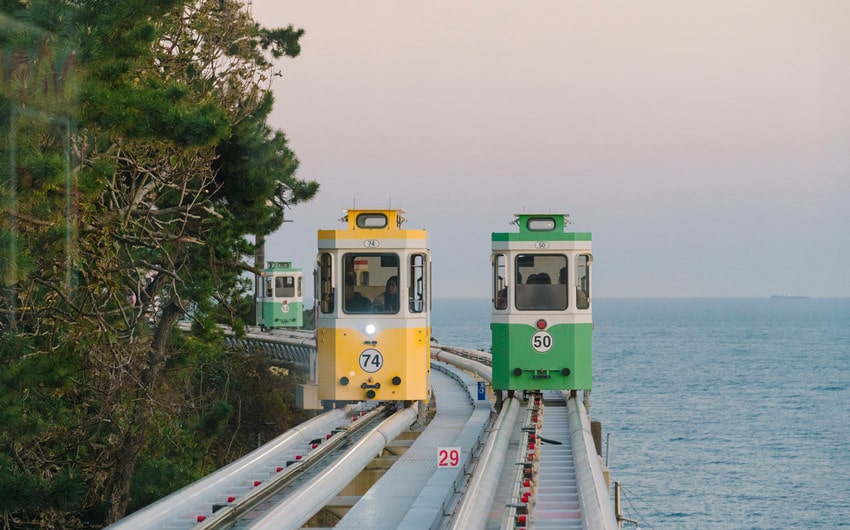
Subway:
- Seoul Subway: One of the most efficient and convenient ways to travel around Seoul. The subway system is extensive, covering almost all major attractions and districts. Stations and trains often have English signs, and there are apps available to help navigate the system.
- T-Money Card: This rechargeable card can be used on subways, buses, and taxis in major cities like Seoul and Busan. It’s easy to purchase at convenience stores and subway stations, and it saves time and money on fares.
- Busan Subway: Another efficient subway system, covering the key areas of Busan. It’s a great way to get around the city, with stations close to major attractions like Haeundae Beach and Jagalchi Fish Market.
Buses:
- City Buses: Korea’s city bus networks are extensive and affordable. Buses can take you to places that are not easily accessible by subway. There are different types of buses (regular, express, and village buses) that cater to different needs.
- Intercity Buses: For travel between cities, intercity buses are a comfortable and cost-effective option. There are express buses and premium buses, with the latter offering more spacious seating.
- Airport Limousine Buses: These buses connect major airports like Incheon and Gimpo with various parts of Seoul and other cities. They are a convenient option for getting to and from the airport.
Taxis:
- Regular Taxis: Taxis are plentiful and relatively inexpensive compared to many Western countries. They are a convenient option, especially late at night when public transportation might be less frequent.
- International Taxis: These are specifically available in Seoul and cater to foreign tourists, with drivers who can speak basic English, Chinese, or Japanese.
- KakaoTaxi App: This ride-hailing app is widely used in Korea. It allows you to book taxis using your smartphone, ensuring you get a ride quickly and safely.
Navigating Korean Currency and Payment Methods
Currency:
- Korean Won (KRW): The official currency is the Korean Won. Bills come in denominations of 1,000, 5,000, 10,000, and 50,000 won, and coins are available in 10, 50, 100, and 500 won.
- ATMs: ATMs are widely available and usually have an English language option. Look for ATMs in convenience stores, banks, and subway stations. Be aware that not all ATMs accept foreign cards, so look for global ATMs.
Payment Methods:
- Credit Cards: Credit cards are widely accepted in Korea, especially in urban areas. Visa, MasterCard, and AMEX are commonly used. However, it’s always a good idea to carry some cash for small vendors or in rural areas.
- T-Money Card: Besides transportation, the T-Money card can also be used for small purchases in convenience stores, cafes, and some vending machines.
- Mobile Payments: Mobile payment options like KakaoPay, Samsung Pay, and Apple Pay are becoming more popular. These can be convenient if you have them set up on your smartphone.
Safety Tips and Emergency Contacts
General Safety:
- Low Crime Rate: Korea is generally very safe for travelers. Violent crime is rare, and petty crime like pickpocketing is also less common than in many other countries. However, it’s always wise to stay alert and take standard precautions.
- Emergency Numbers: The emergency number for police is 112, and for fire and medical emergencies, it’s 119. Most operators can speak basic English.
- Emergency Translation Services: For help in communication during emergencies, you can call the Korea Tourism Organization’s 24-hour helpline at 1330, which provides translation and tourism information.
Health and Medical Services:
- Pharmacies: Pharmacies are easily found in cities and towns. Look for the green cross sign. Pharmacists can often speak some English, and they can provide over-the-counter medication for common ailments.
- Hospitals and Clinics: Major hospitals in cities like Seoul and Busan have international clinics with English-speaking staff. In case of a medical emergency, these facilities provide excellent care.
- Travel Insurance: It’s highly recommended to have travel insurance that covers medical expenses. Medical care in Korea is of high quality but can be expensive for uninsured travelers.
Internet and Connectivity
Wi-Fi:
- Free Wi-Fi: Free Wi-Fi is widely available in cafes, restaurants, and public areas like subway stations and shopping centers. Many accommodations also offer free Wi-Fi.
- Wi-Fi Rental: Portable Wi-Fi devices can be rented at major airports, providing constant internet access throughout your trip. This is especially useful for navigating and staying connected on the go.
SIM Cards:
- Prepaid SIM Cards: Available for purchase at airports and convenience stores, prepaid SIM cards offer data plans for travelers. Ensure your phone is unlocked before purchasing.
- eSIM Options: Some providers offer eSIMs for travelers, allowing you to set up a local number and data plan without needing a physical SIM card.
Cultural Insights
Respect for Local Customs:
- Shoes Off Indoors: When entering someone’s home or certain traditional accommodations like hanoks, it’s customary to remove your shoes.
- Modesty in Dress: While urban areas are fashion-forward, modesty is appreciated, especially when visiting temples and historical sites. Avoid overly revealing clothing.
- Quiet in Public Spaces: Koreans tend to be more reserved in public spaces like subways and buses. Keep your voice down and be mindful of others’ personal space.

